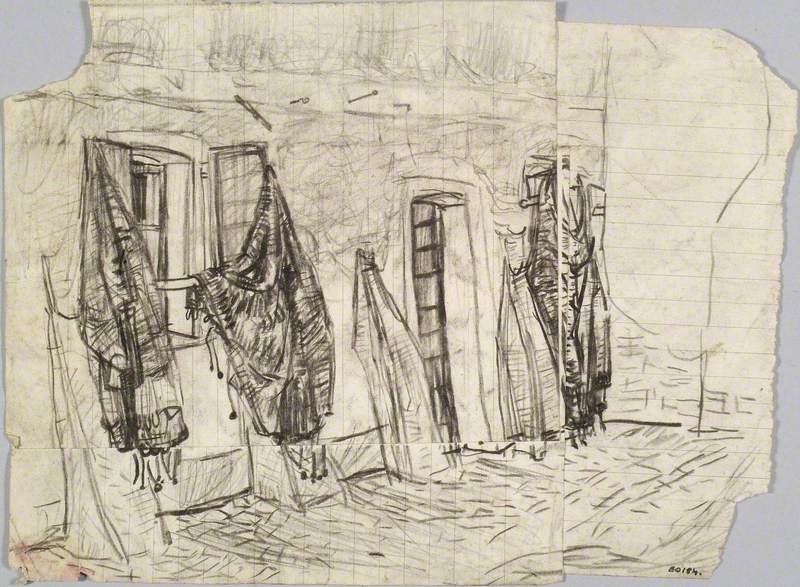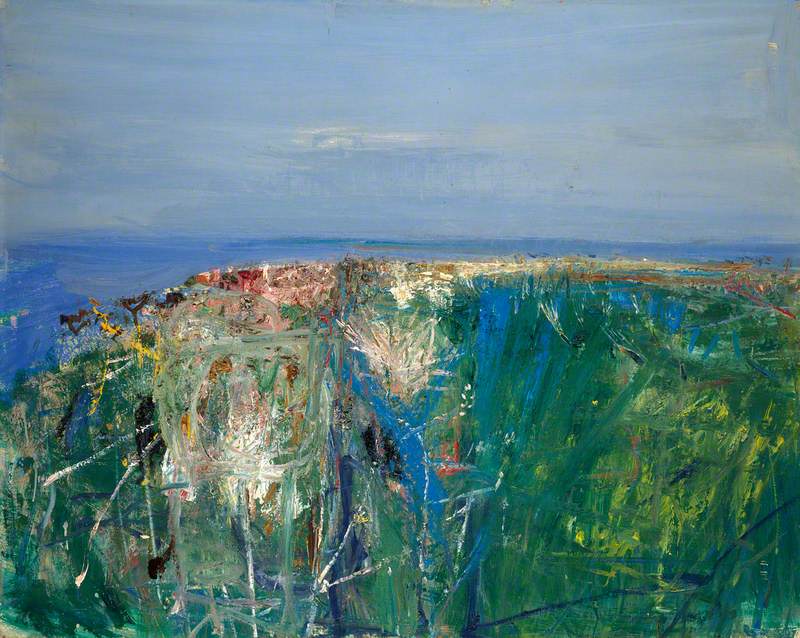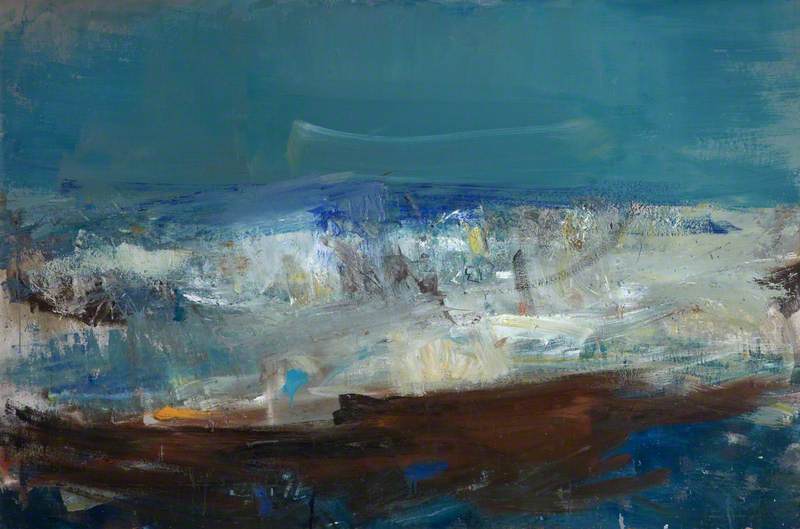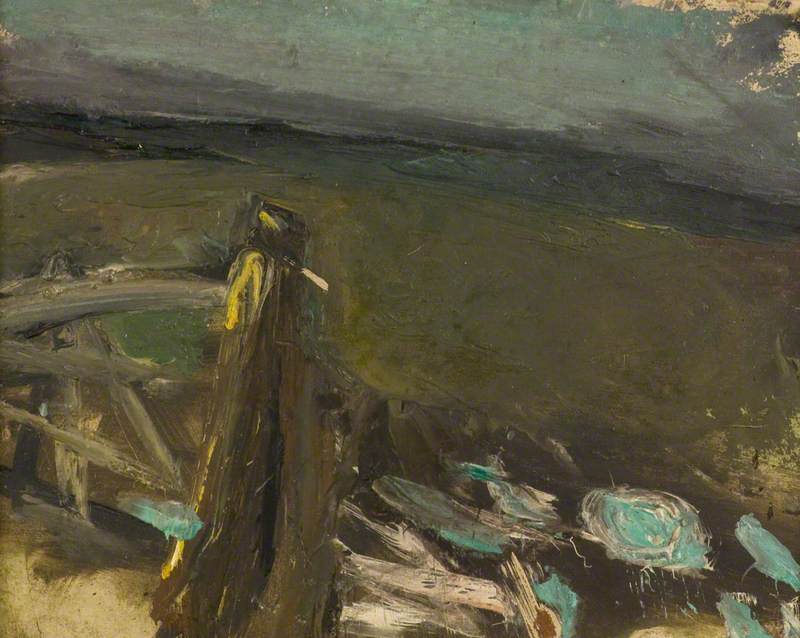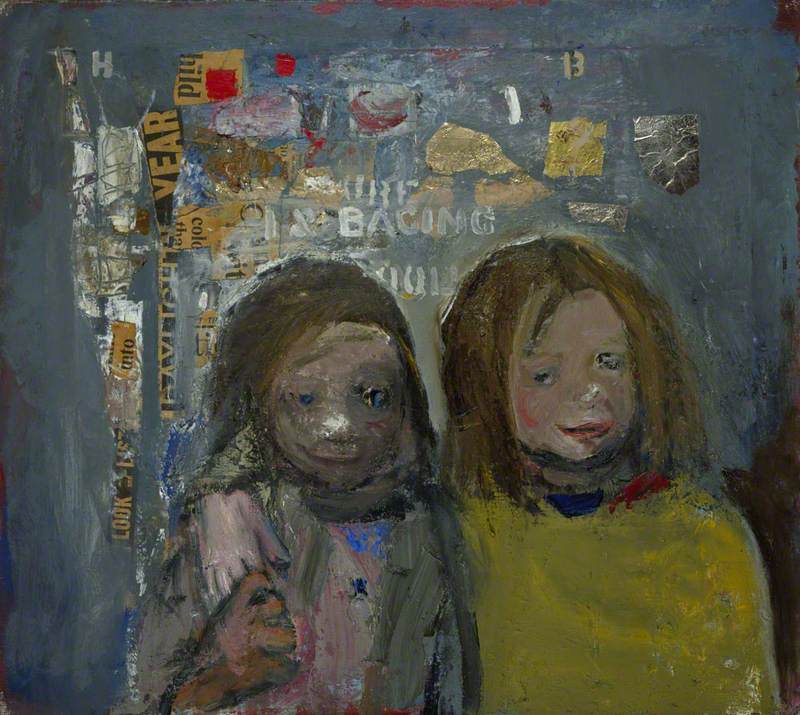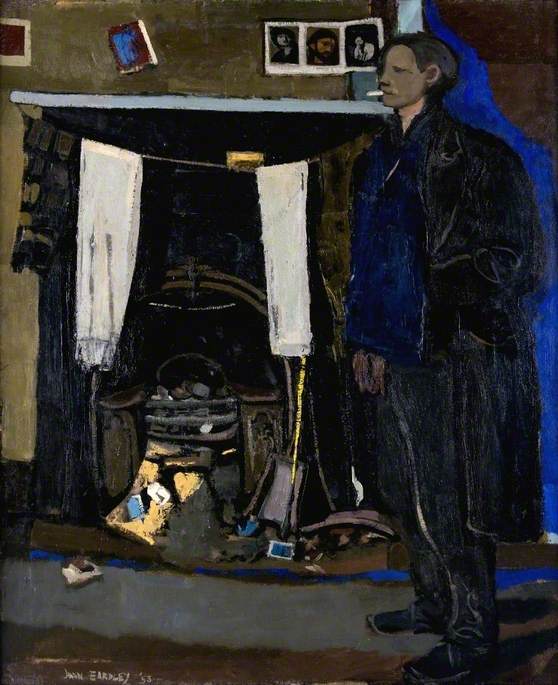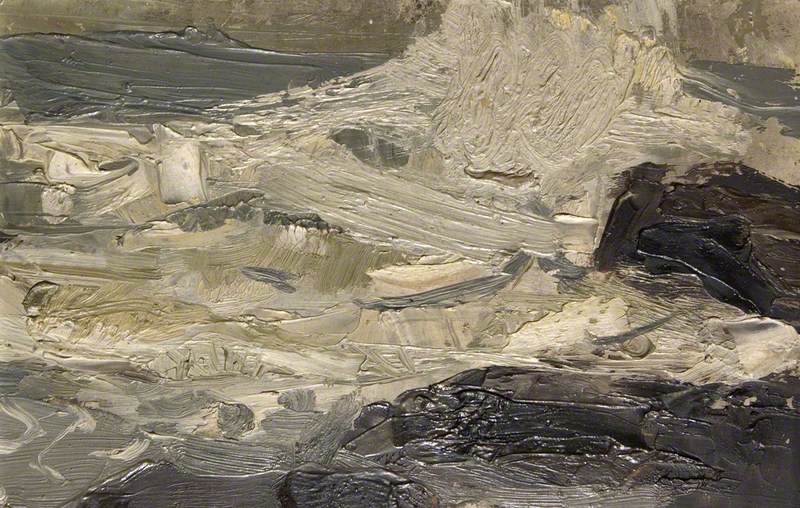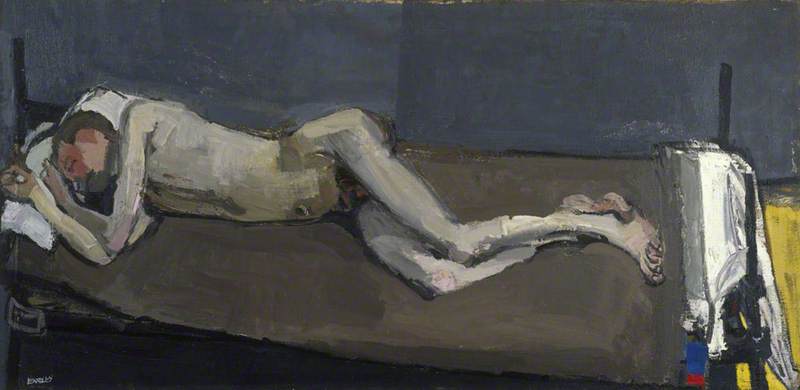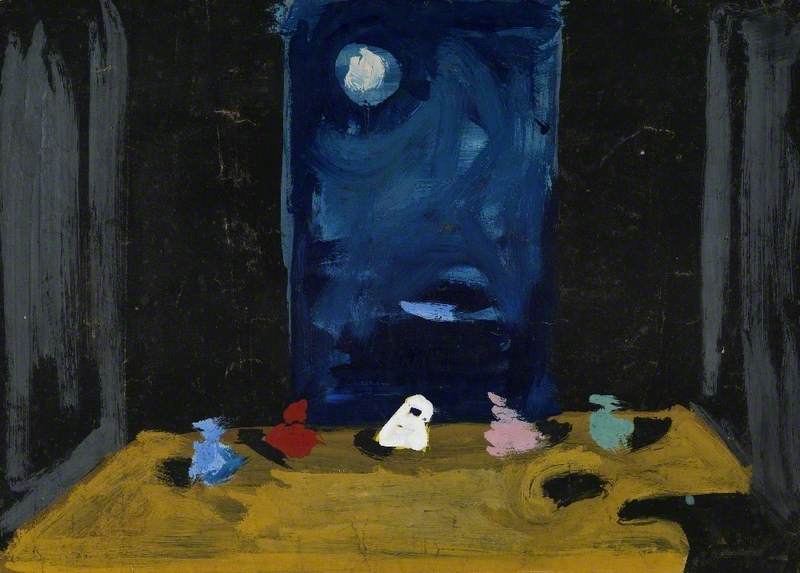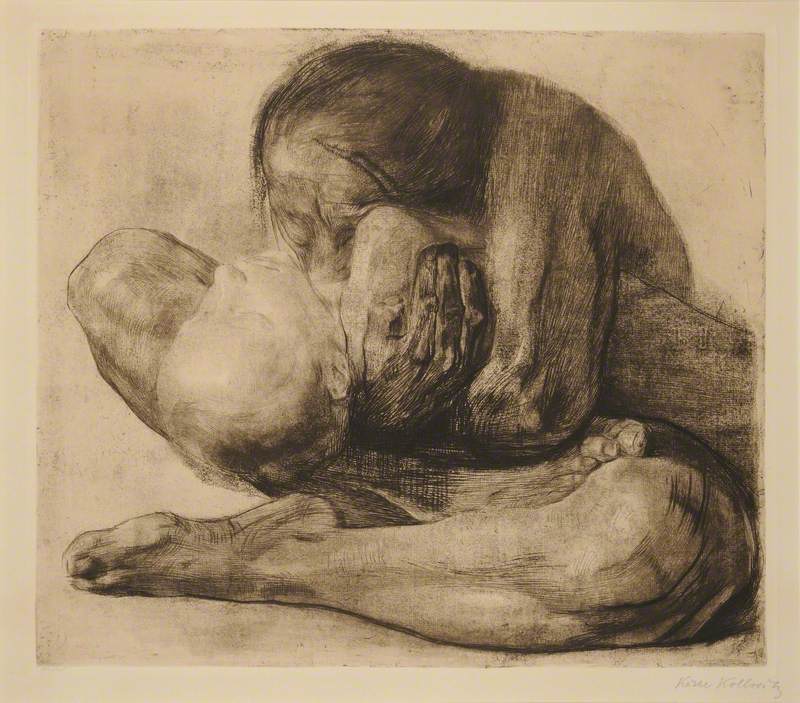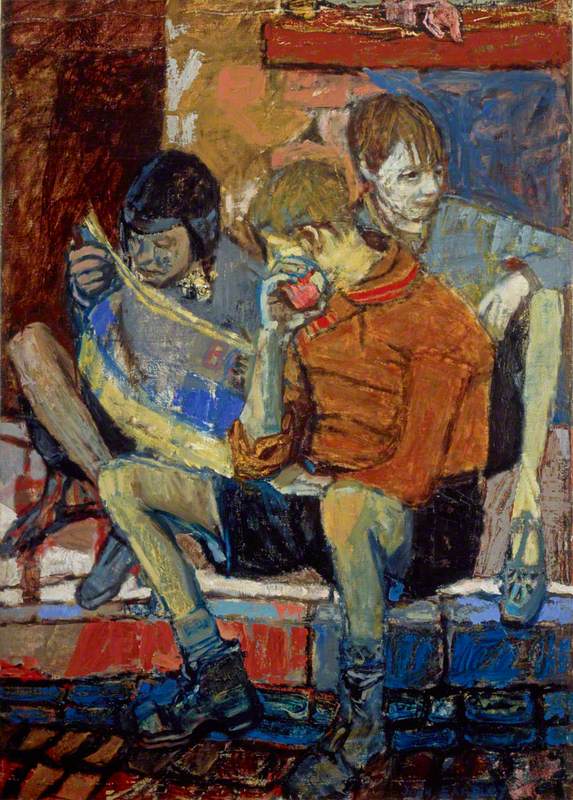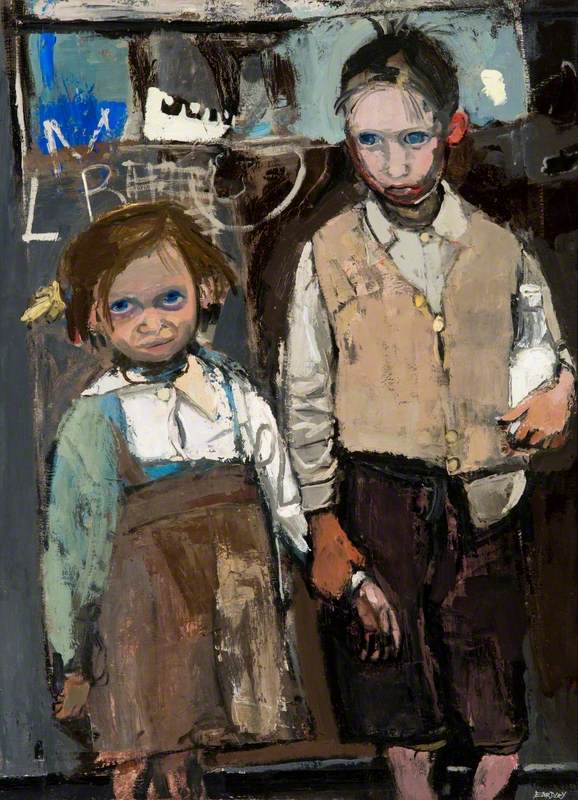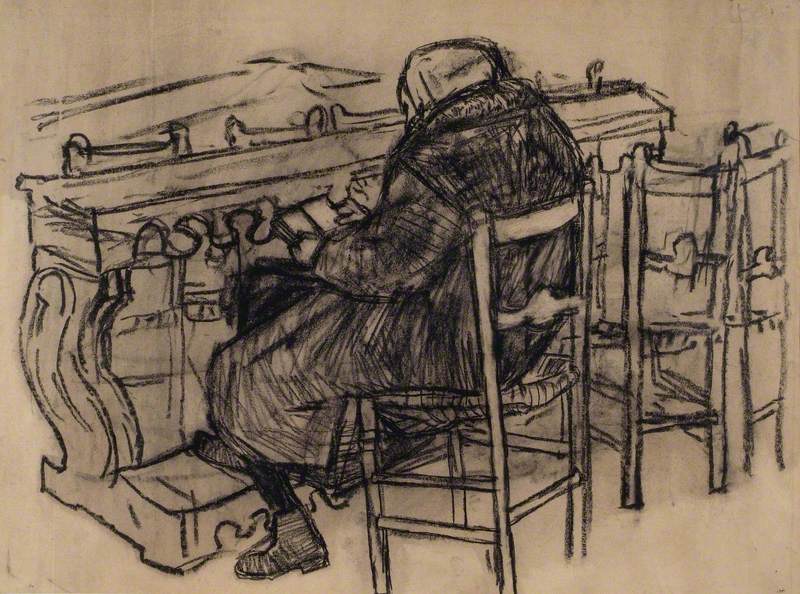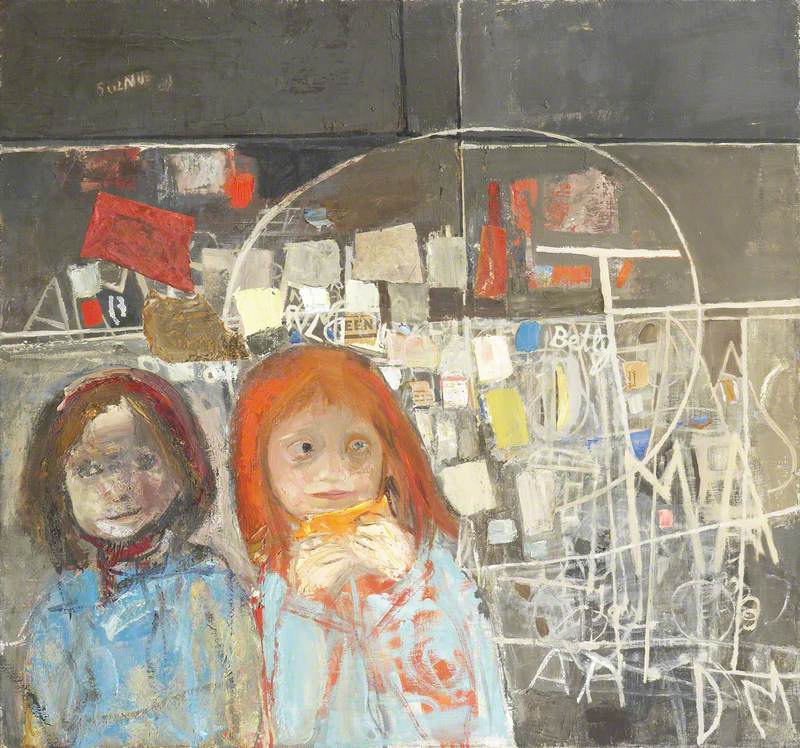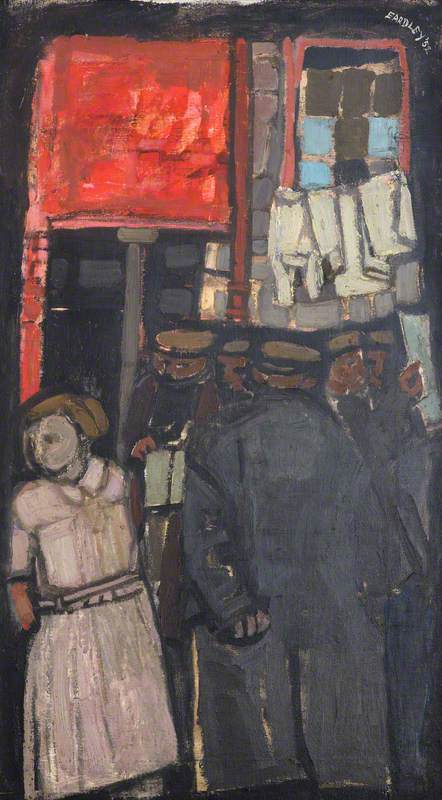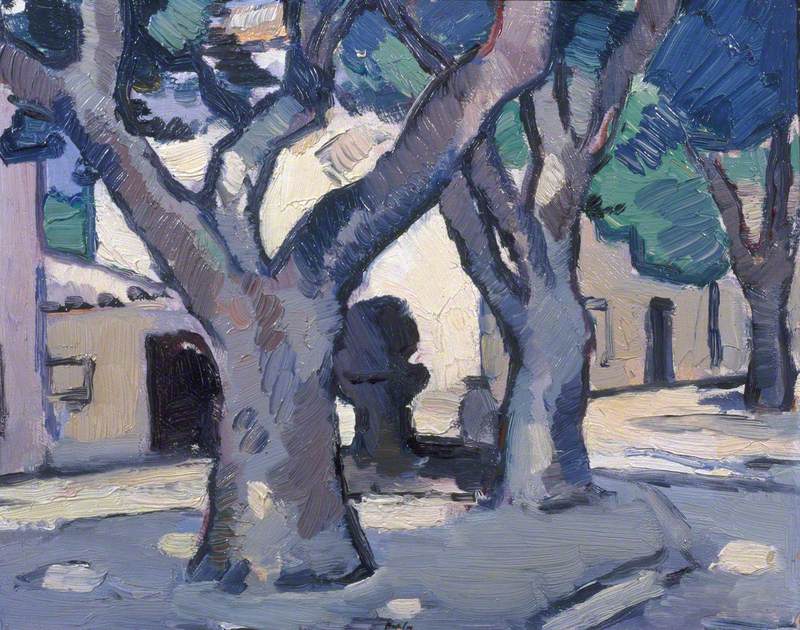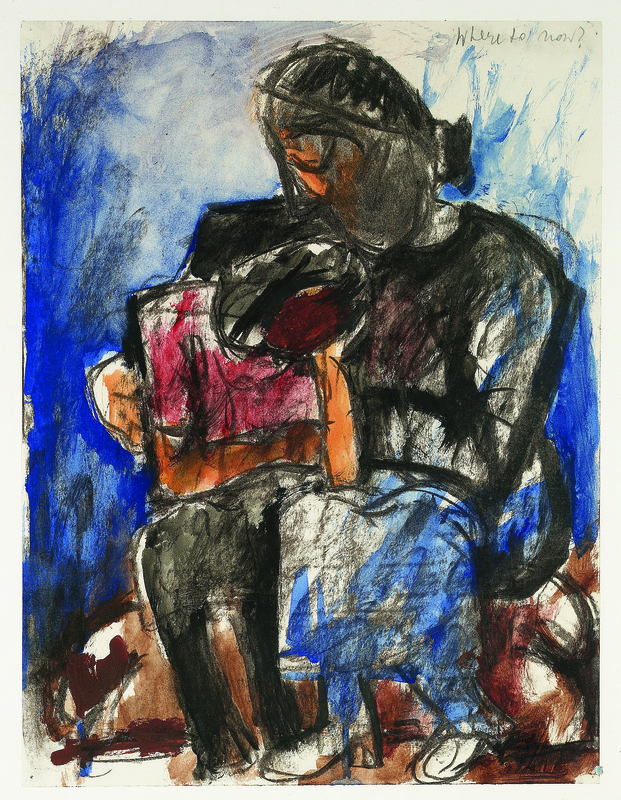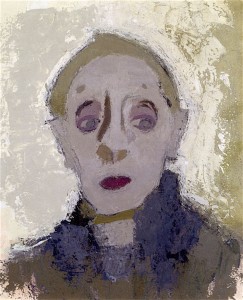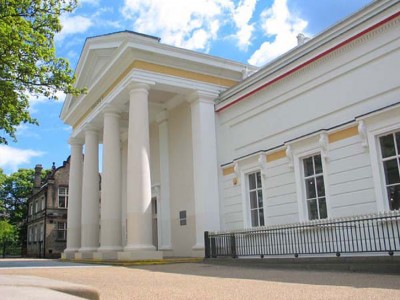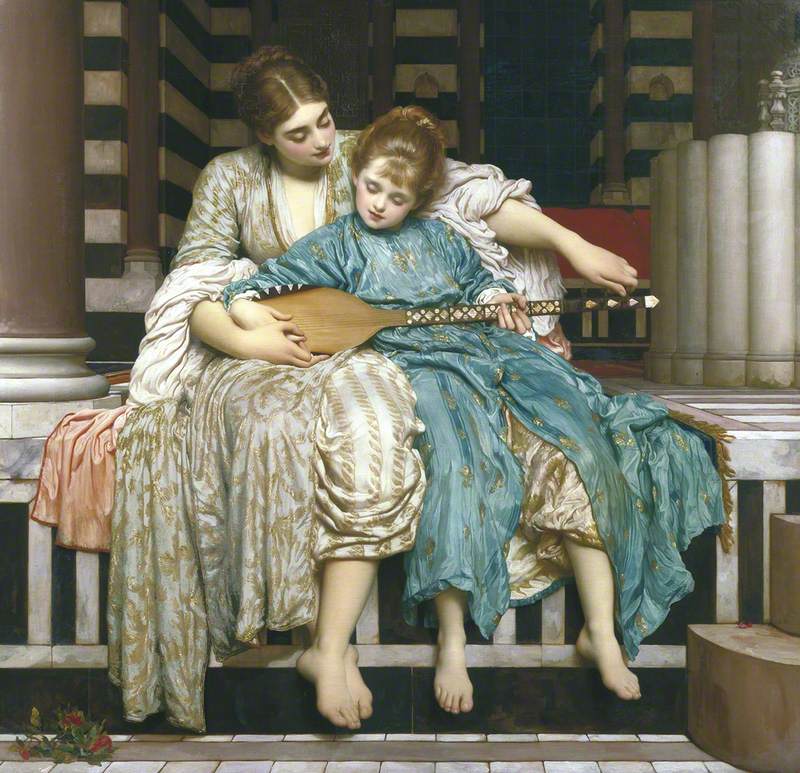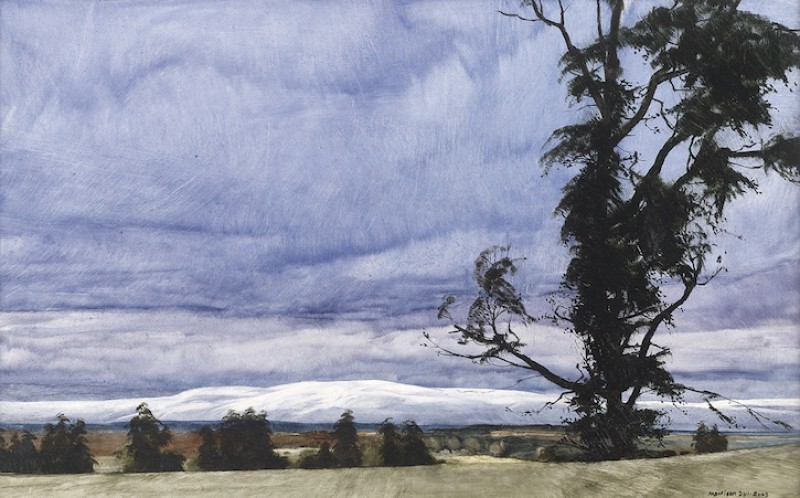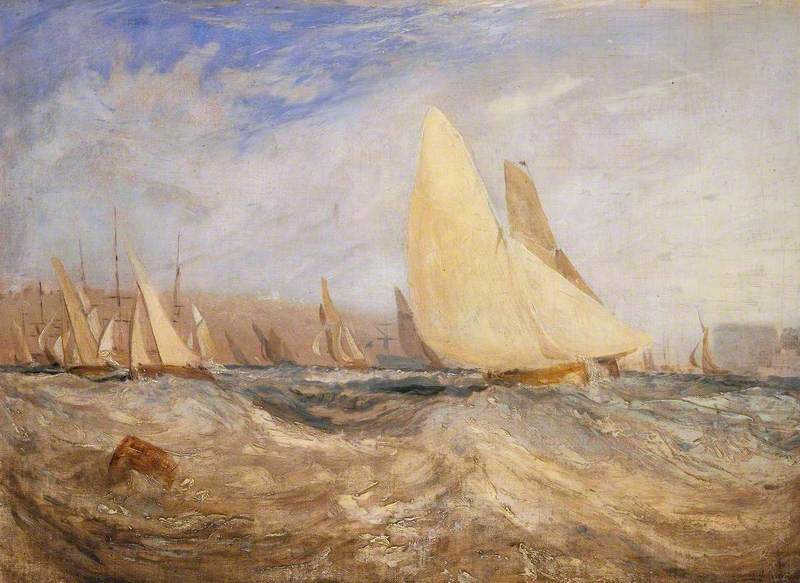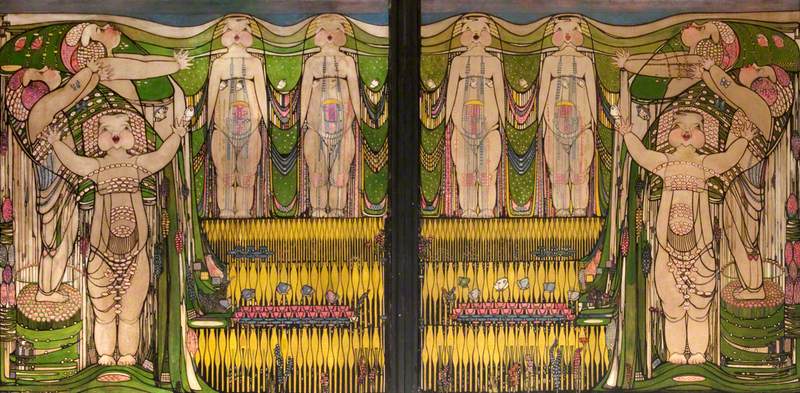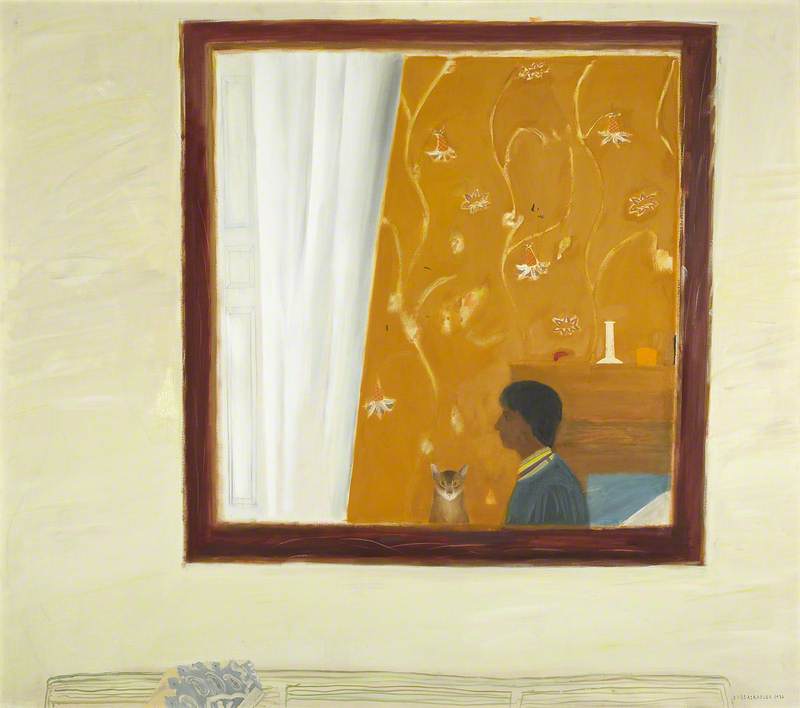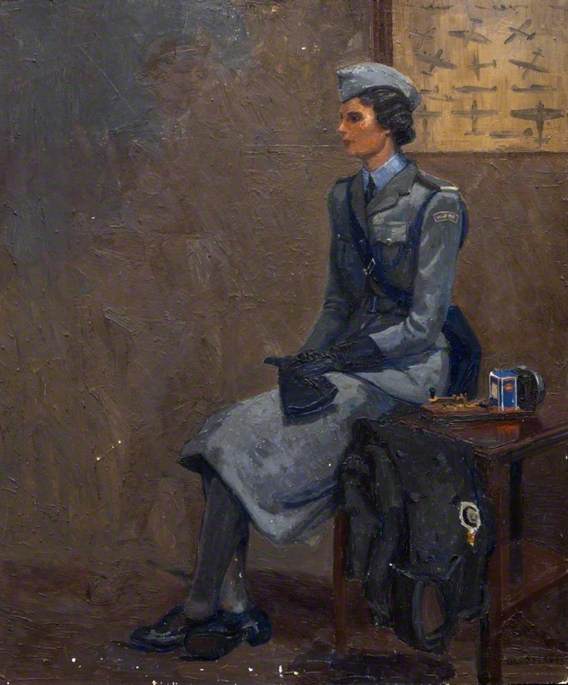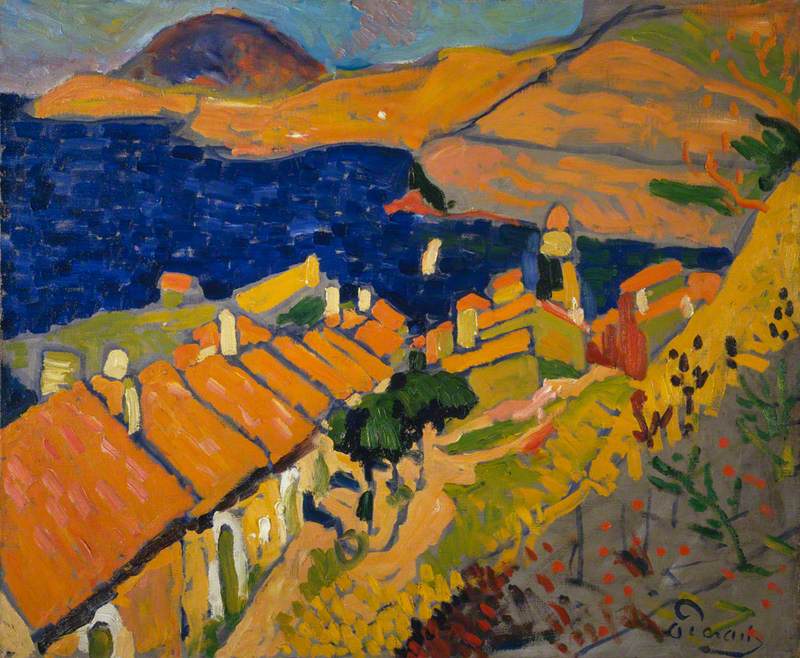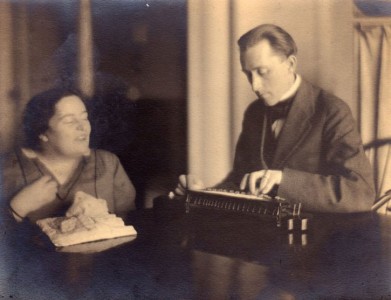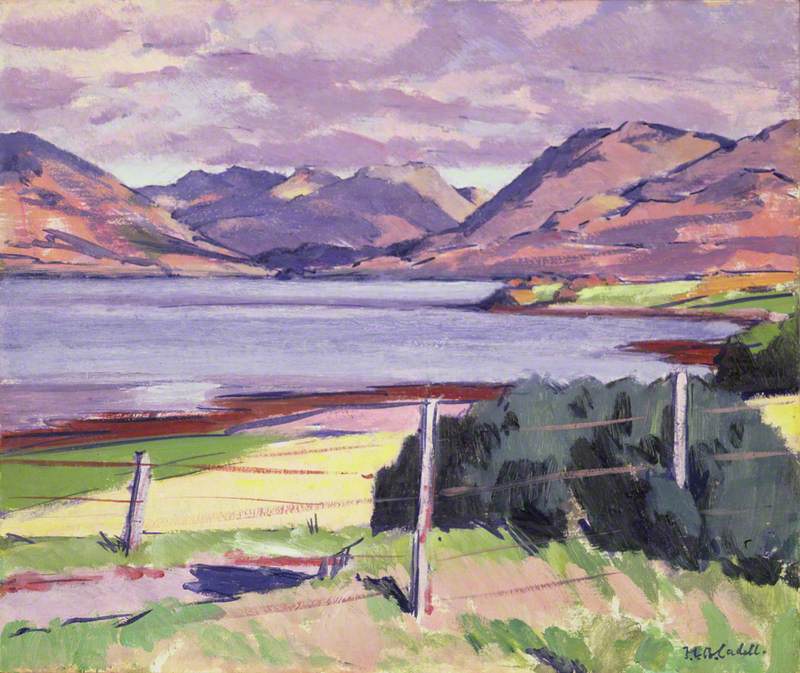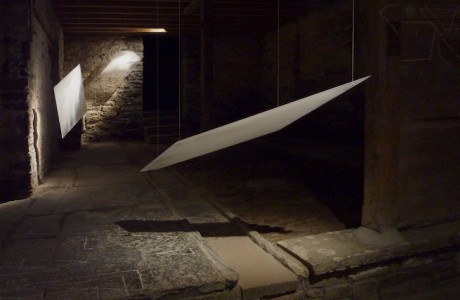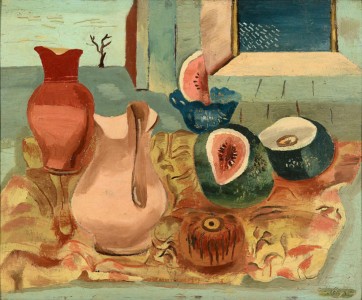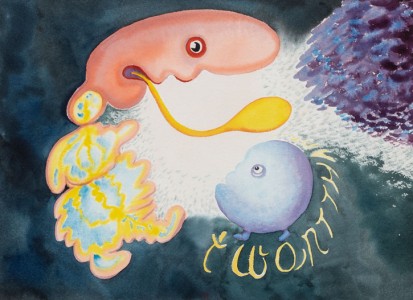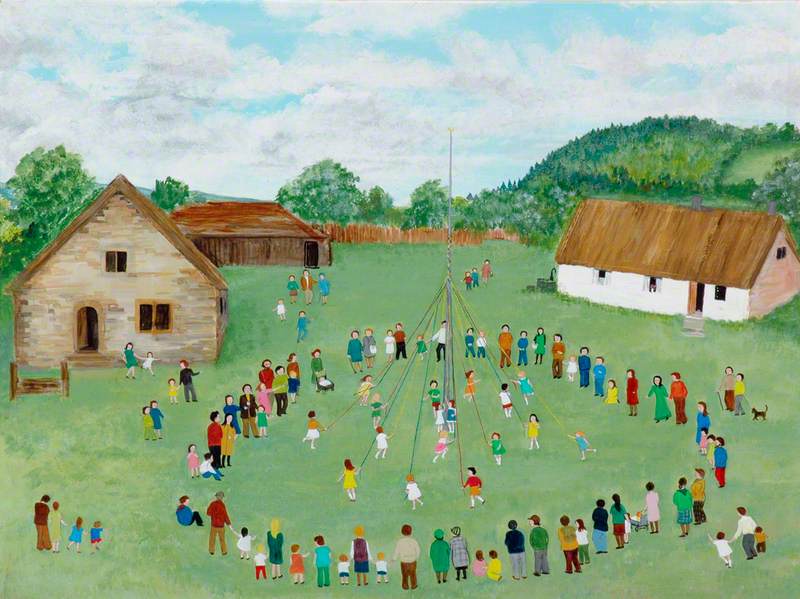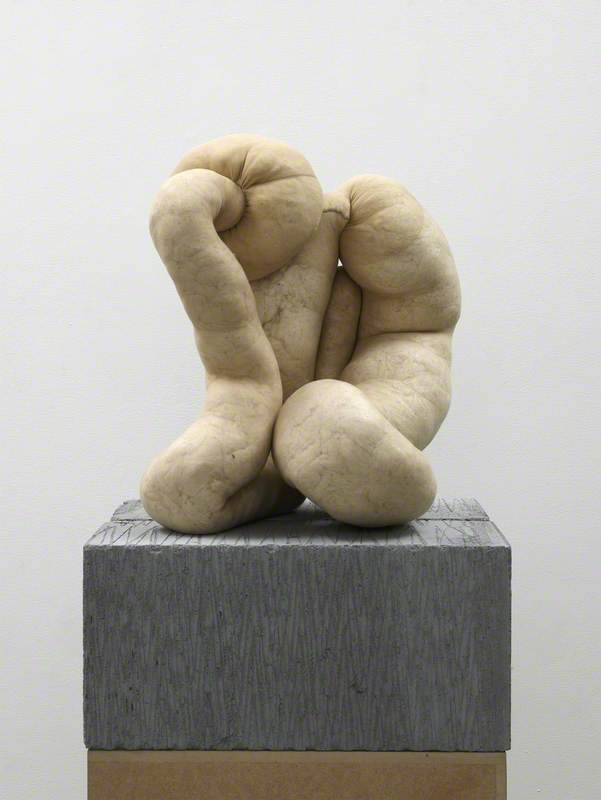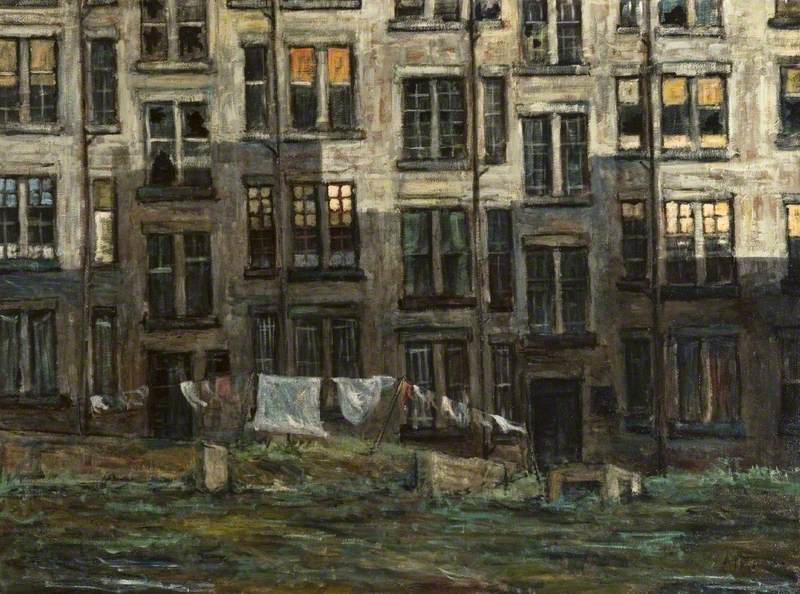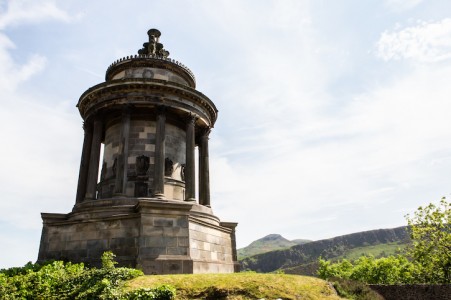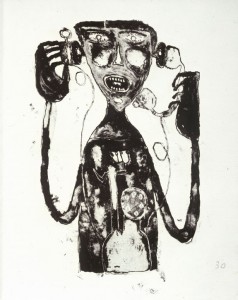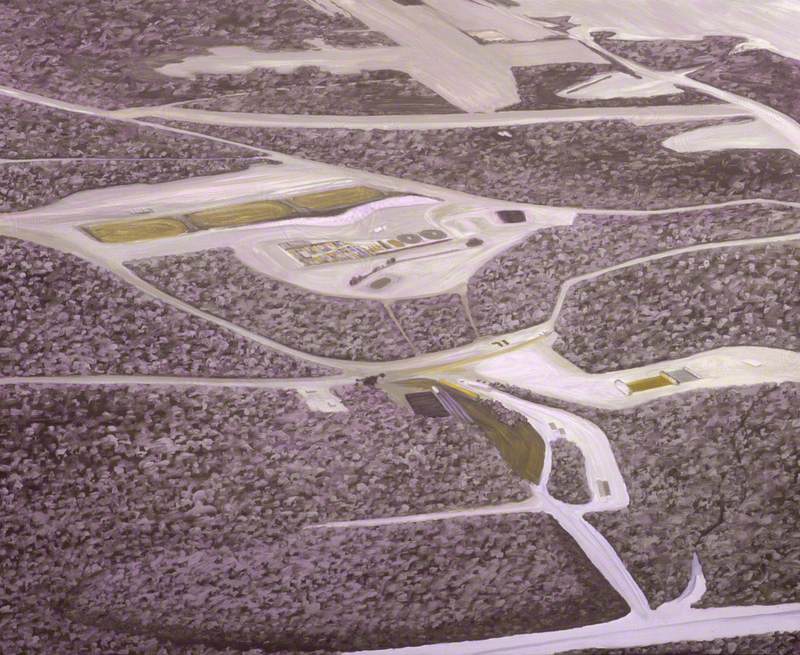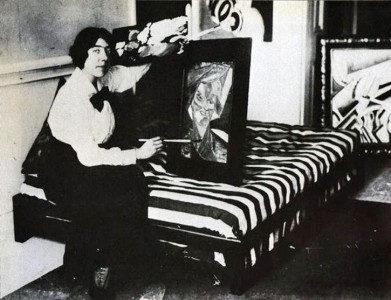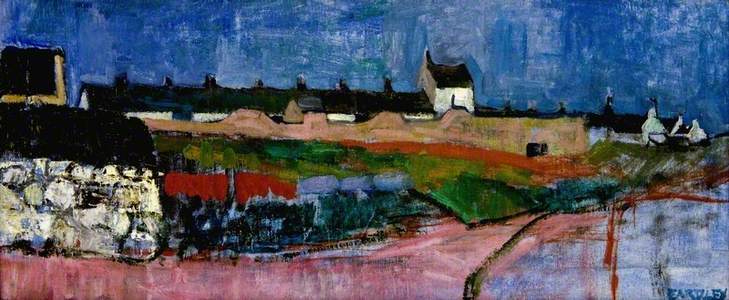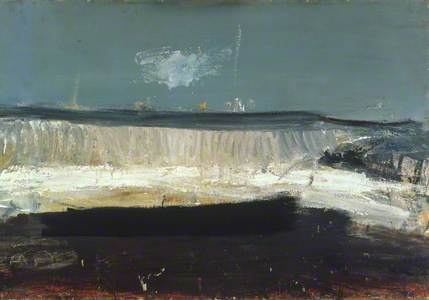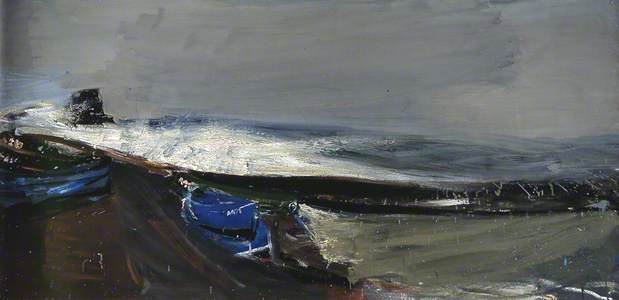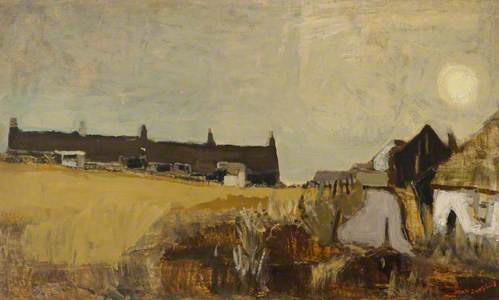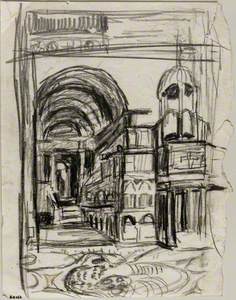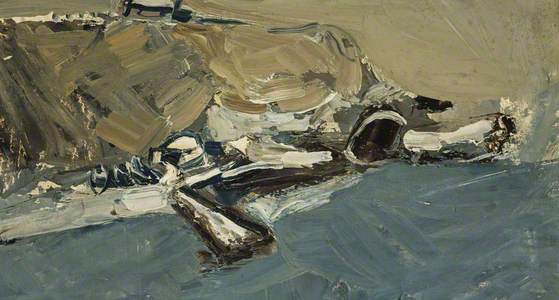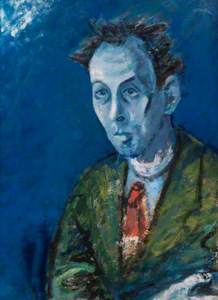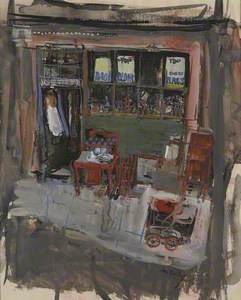To celebrate the centenary of the birth of Joan Eardley (1921–1963), a series of events led by the Scottish Women and the Arts Research Network (SWARN) in collaboration with the University of Glasgow (The Hunterian and Archives and Special Collections), The Glasgow School of Art, Paisley Museum and Art Gallery and Glasgow Women's Library will be taking place in 2021.
When Joan Kathleen Harding Eardley (1921–1963) first walked up the steps of The Glasgow School of Art (GSA) in January 1940, she must have felt a frisson of excitement. Pushing open the front door, with its shining brass plaques engraved with the words 'IN' and 'ART' in Charles Rennie Mackintosh's distinctive lettering, the 18-year-old would surely have noticed the adjoining symmetrical exit with similar plaques bearing the single words 'OUT' and 'SCHOOL'. Mackintosh left no design stone unturned with his Art Nouveau masterpiece. He wanted everyone to understand they were walking into an art school created for and by an artist.
Eardley's talent had first been spotted by Miss Waddland, a teacher at the small private school, St Helen's in Northwood, she attended after moving from the Sussex village of Warnham to London in 1926. The move had been made following her parents' separation. Her father, William Eardley, had been the victim of a gas attack in the First World War and suffered shell shock. He shot himself in 1929, leaving his family dependent on relatives. Although she didn't find out about her father's suicide until she was in her late teens, this event had a lasting effect on Eardley, who suffered periods of depression throughout her life. In a letter written in 1957, she even refers to 'the loneliness that I could put away by painting.'
Eardley's talent was clear from a young age. A painting she did in her final year at school in 1938, Fair at Blackheath, was included in her GSA portfolio submitted for the Diploma Course. It's a busy, bustling scene, featuring children, adults and donkeys. Full of energy and verve, and with a maturity belying her years, it offers a glimpse of the talent lurking within the shy exterior.
Glasgow Kids, a Saturday Matinée Picture Queue
c.1949
Joan Kathleen Harding Eardley (1921–1963) 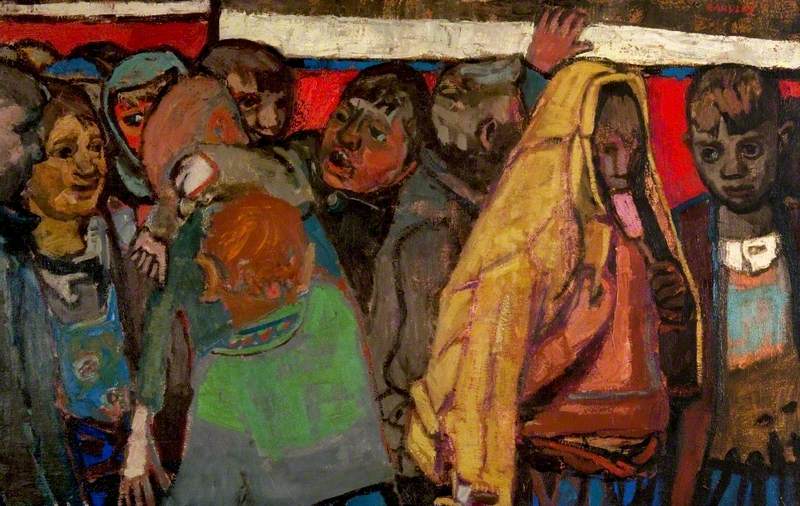
Eardley enrolled at GSA three months after the start of the Second World War, having spent two terms at Goldsmiths College in London. Together with her grandmother, Scottish-born mother, and younger sister, she had moved north to escape the dangers of wartime London. The family eventually settled in Bearsden, a suburb north of Glasgow.
One of the first friends Eardley made at GSA was fellow Bearsden resident Margot Sandeman. Each recognised a kindred spirit in the other and they soon became close. Their respective styles were different, but each fed into the other's art.
The relationships Eardley established with tutors and peers such as Margot, with whom she discussed art in great depth in letters they sent to each other during the course of Eardley's lifetime, were fundamental to her development as an artist. They set her up for life as an artist who looked at the world intently and with feeling.
Hugh Adam Crawford was Head of Painting by the time Eardley arrived at GSA in 1940. According to Eardley's biographer, Cordelia Oliver, a student at the same time, he told them: 'If you want to be a good painter, and I mean one who matters beyond the ordinary kind of success with people around you, you have to be prepared to break down some kind of barrier in yourself.'
Child with Red Doll
(on verso 'Studies of Male Figure') 1950–1963
Joan Kathleen Harding Eardley (1921–1963) 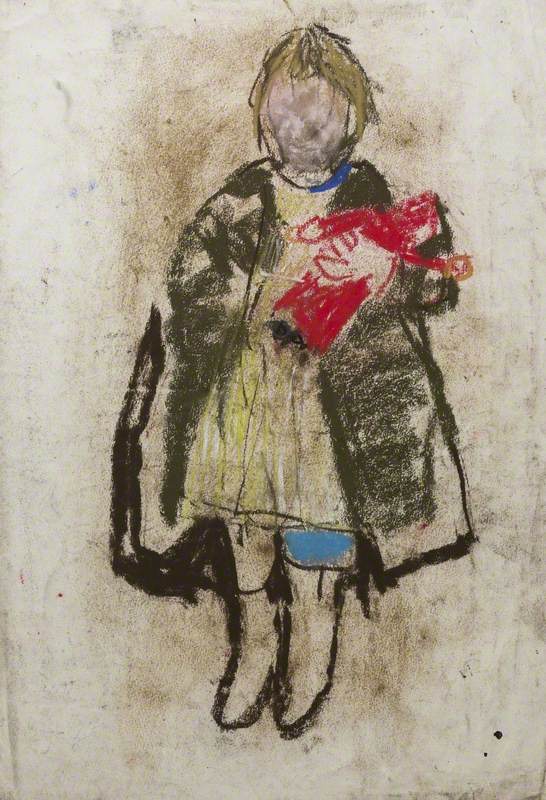
Crawford was hugely influential on his students, not by encouraging them to adopt a specific style or approach, but by identifying their strengths and challenging them to be courageous. They should go, he said, where their instincts took them. During the war years, thanks to conscription, the number of both students and staff greatly reduced during the war years, resulting in unusually intensive training for the small number who remained.
During these years, Glasgow played host to a thriving art scene. Polish artists such as Jankel Adler and Josef Herman settled briefly in the city and had links to GSA. Both artists were firmly rooted in the expressionist tendencies of northern European art.
The training at GSA at that time was heavily influenced by French art, but Herman introduced Eardley to the earthy, everyday art of the Belgian Expressionists, particularly the work of one of its leading exponents, Constant Permeke, with its heavy brushwork and muted tones. These painters admired the early works of Vincent van Gogh and Eardley was drawn to the same subject matter as Permeke: farmworkers and gloomy interiors.
Herman is known to have admired the German artist Käthe Kollwitz, and was particularly affected by a poster she made with the slogan, 'Germany's Children are Starving'.
A few years later, when Eardley started painting children from the slums of Port Glasgow and Townhead in Glasgow, as seen in works such as Street Kids and Brother and Sister, she would insist there was no sociopolitical message. Yet looking at works by the likes of Permeke and Kollwitz, it's hard not to see a connection.
A self portrait – the only extant self portrait of Eardley – painted for her GSA diploma examination in the spring of 1943, echoes the work of these Expressionist painters. Painted using oil on plyboard, it revels in hastily applied licks of strong Fauvist-style colour with patches of bare board. Eardley spent a week on one portrait, before discarding it. Speedily, she produced a recognisable likeness: a young woman on the cusp of adult life, staring tentatively, yet defiantly, at the viewer.
Joan Eardley (1921–1963), Artist
1943
Joan Kathleen Harding Eardley (1921–1963) 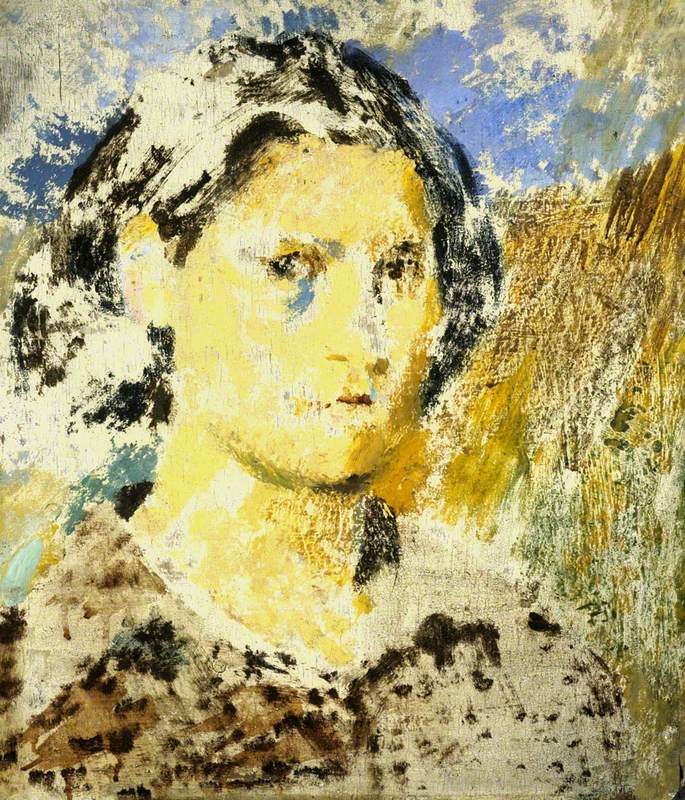
The painting, for which Eardley won the Sir James Guthrie Prize for Portraiture, was bought by Crawford, who hung it in his home. A few years later, he included her work in a self portrait which he painted in his home. Teacher and pupil's self portraits are both in the collection of the Scottish National Portrait Gallery.
Hugh Adam Crawford (1898–1982), Artist, Self Portrait
c.1943
Hugh Adam Crawford (1898–1982) 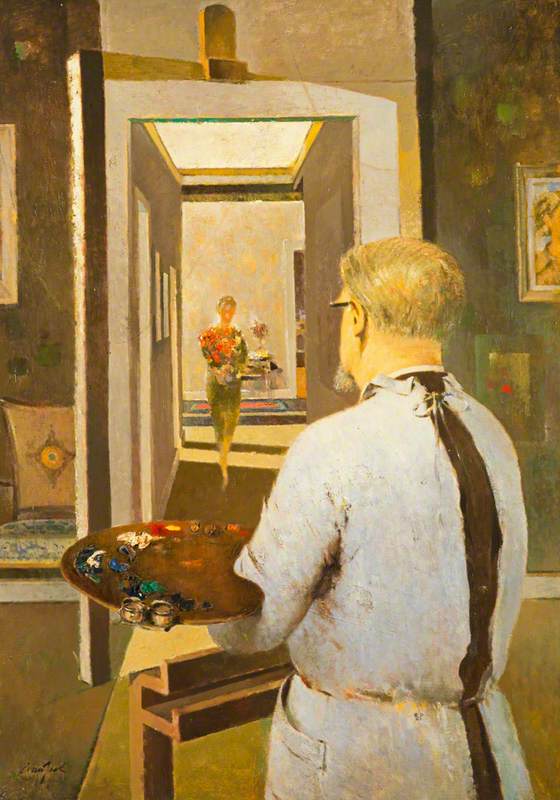
Eardley's approach to art, forged at GSA and maintained until her dying day, was based on intense observation. She never made anything up. A star pupil during her diploma years, and also in her post-diploma year from 1947 to 1948, her only solo exhibition in Glasgow during her lifetime took place in GSA's Mackintosh Gallery in 1949.
That show, which featured 43 works from her travelling scholarship, painted a vivid picture of the places and people Eardley encountered on her travels in post-war Italy. The exhibition met with widespread critical acclaim, particularly for the quality of Eardley's draughtsmanship. Drawings such as Old Woman in Church, Fishing Nets at Burano, near Venice and Young Man Playing an Accordion, found their way into the collection of Aberdeen Art Gallery. Others went to collections, including that of GSA, or private buyers. The work, rooted in gritty realism, was a portent of the decade to come.
Young Man Playing an Accordion
c.1949–1950
Joan Kathleen Harding Eardley (1921–1963) 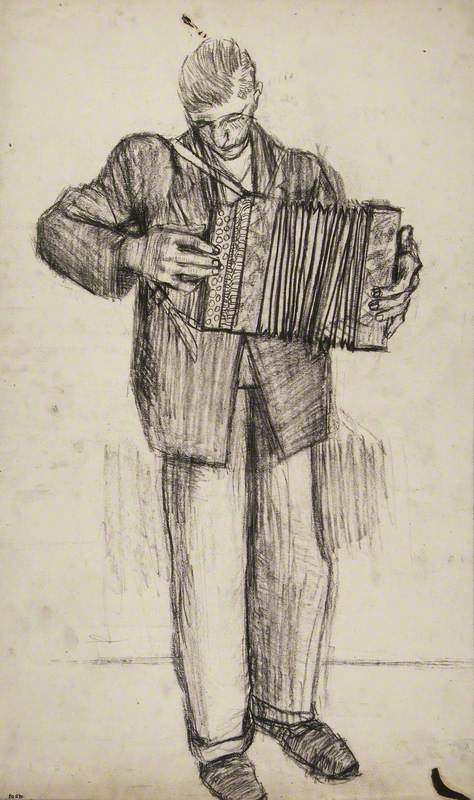
From 1949 onwards, Eardley taught part-time at GSA and rented an old photographer's studio in the inner-city district of Townhead. The whole area was on the cusp of change as redevelopment plans were already underway by the time she was working there. Eardley quickly found her subject matter in the street life around the studio; in the people – mainly the curious children – and in the buildings.
For around 10 years, she drew and painted the Samsons, a family of 12 who lived in a two-bedroom tenement flat close to her studio. In the family, Eardley found ready child models of all ages and stages. She revelled in their energy and their physical quirks. She once said of Pat, one of the youngest girls, that she wasn't so interesting when she had her squint fixed. Eardley painted Pat and her younger sister Ann, many times. The squint which so interested her is clear in Children and Chalked Wall No. 2, a late work that also plays with a growing fascination with graffiti.
Eardley had a small circle of close friends and felt at home when away from polite society chitchat. At every stage of her short career, she was drawn to painting and drawing subjects on the margins of society where daily struggles were the reality of life. She painted the coal carts and back streets of Glasgow, peasants in rural Italy, old people going wearily about their daily business and inner-city kids in ragged clothes with diffident stares.
In Back Street Bookie Eardley shows men in cloth caps hanging around outside a bookkeeper's shop in Townhead, Glasgow. The palette is controlled, the composition tight. Dark tones and sludge-like colours are suddenly broken up by a blast of crimson next to a row of washing drying from a rope slung up at a tenement window.
Catterline Coastguard Cottages
c.1952
Joan Kathleen Harding Eardley (1921–1963) 
From 1952 until her death in 1963, Eardley divided her time between Townhead and Catterline, a small fishing village south of Stonehaven on Scotland's northeast coast. In this isolated spot, perched on the edge of a cliff facing onto the North Sea, Eardley created a large body of landscapes and seascapes.
Initially drawn to its buildings, the shoreline, the surrounding fields and the vertiginous cliff-face, it wasn't until the late 1950s that she began to tackle the sea, which she did with customary verve. Large paintings such as The Wave and High Tide, a Winter Afternoon, pulse with the energy, dynamism and ever-changing moods of the North Sea, and are now acknowledged to be among her finest. Eardley loved the squally weather and the clearly-defined seasons she found in Catterline. She was happy there and lived quietly among its hard-working people.
High Tide, a Winter Afternoon
1961
Joan Kathleen Harding Eardley (1921–1963) 
The last three years of Eardley's life coincided with a period of frenzied painting. As her lover, Lil Neilson said after her death: 'They just flowed out of her. It was as if some floodgate had burst.' In these years, she was dogged by a permanently sore neck and back but she kept going, her work getting bigger and more abstract. In February 1963, Eardley was elected an Academician of the Royal Scottish Academy and in March she entered into an intense period of painting at Catterline. In a letter written to Neilson from London on May 18th (her 42nd birthday), she said that she had been told that day by a doctor that she had breast cancer.
Seascape (Foam and Blue Sky)
1962
Joan Kathleen Harding Eardley (1921–1963) 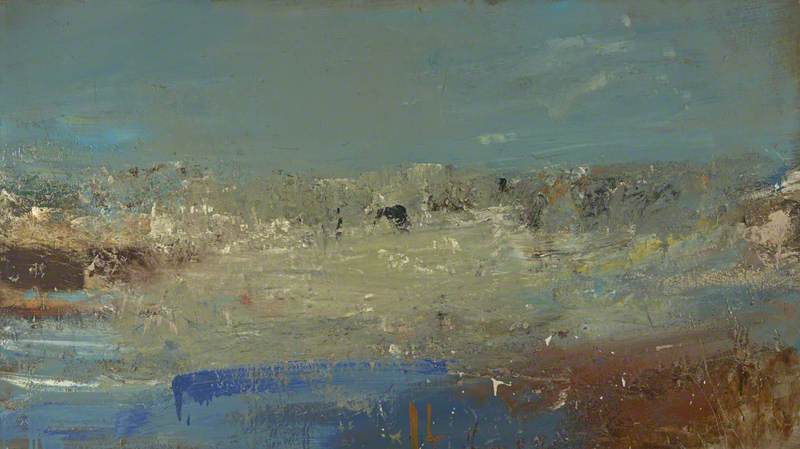
Eardley died three months later. Her ashes were returned and scattered on Catterline's shoreline, where until a few months earlier she had been a familiar figure in her old RAF flying suit and heavy boots, her easel held fast by an old anchor. It was here she felt most at home, her eyes trained on the ever-changing scene in front of her as she squared up to a blank canvas.
Joan Eardley's career as an artist spanned just 20 years, from her graduation from GSA in 1943 to her early death in 1963. However, the intensity with which she tackled her art never, ever wavered.
Jan Patience, writer and journalist
To find out more about the centenary activities, visit the official website www.joaneardley.com, created by the artist's family to mark the occasion.



